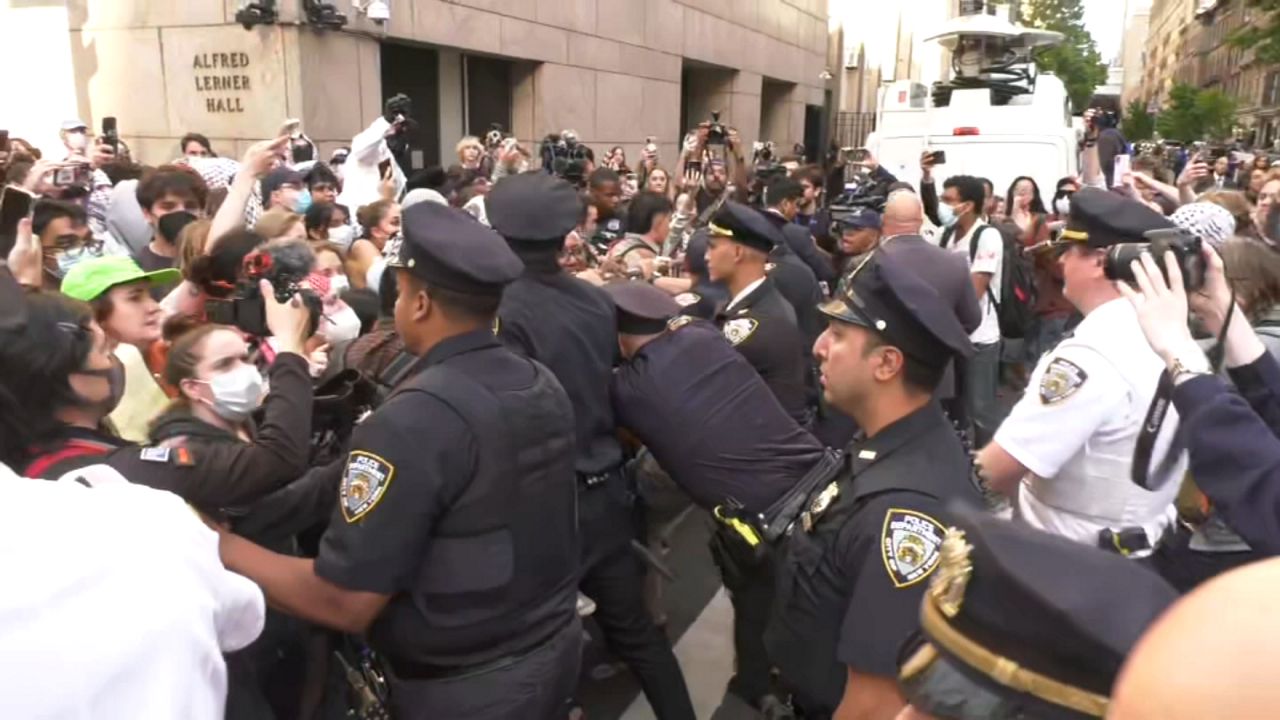The city will spend $50 million to spruce up 90 middle and high school cafeterias by the end of the year, with grab-and-go options and new kinds of seating. Along with expanding halal meal options, officials say it’s a way to encourage more students to grab a bite to eat.
At Hillcrest High School in Queens, students have a range of options for lunch every day, which they can quickly grab from a setup that looks more like a food court than an old-school cafeteria.
“Instead of wasting our time on the lines, we can just walk in and get our lunch and enjoy our time with our friends, you know, that’s the only time we have from the day when we can just talk to our friends and have a little bit of fun too,” senior Musammat Hussain, 17, said.
What You Need To Know
- The city will spend $50 million to spruce up 90 middle and high school cafeterias by the end of the year
- The "enhanced cafeterias" have grab-and-go options and new kinds of seating, and advocates say they make children more likely to eat lunch
- The city is also expanding the availability of halal meals, with 79 kitchens certified to serve them so far
It’s one of the design elements of what the city calls an enhanced cafeteria — already in place at 60 middle and high schools, and coming to 90 more by the end of the year. Hillcrest has had this setup for four years. Principal Scott Milczewski says in the past, long lines and limited options turned many students off eating school lunch.
“This setup allows for a much more open-air, right, concept of a buffet almost, right? I want this, I don't want that, you grab what you want. It's not one long line waiting on being served,” Milczewski said.
The new cafeterias also boast murals on the walls, and more seating options.
“Even the booths,” Schools Chancellor David Banks noted. “Years ago when we went to schools, we didn’t have booths. We had long tables that sat a hundred people.”
The organization Community Food Advocates found the changes made a real difference. They say lunch participation grew by 35% in the first set of high schools that got the redesign.
Senior Jana Radwan, 17, says she finds it more welcoming.
“I always used to avoid cafeterias during middle school. I would sit at my teacher's office just to avoid like — it was so crowded, and I just didn’t really feel comfortable,” she said.
Part of feeling comfortable is also being sure that there’s something on the menu you can eat — and for some students, that means halal meals. The city has now certified 79 school kitchens to serve halal meals, a figure they say will continue to grow.
“I feel included, actually. I could come in the cafeteria and eat something that I can eat, and doesn’t break my religious practices,” Musammat said.
The program certifies kitchens as halal, and in the cafeteria, students don’t need to stand in separate lines or opt for vegetarian choices. Without those options, students say they were sometimes forced to choose between food and faith.
“A lot of times I have like, a club after school or College Now, I have to stay later than like 3 p.m., so I definitely need something to eat. So being able to eat halal foods in school makes me feel a lot better,” Jona said.
These students say they hope the availability of halal food expands to every school where a student needs it.









)